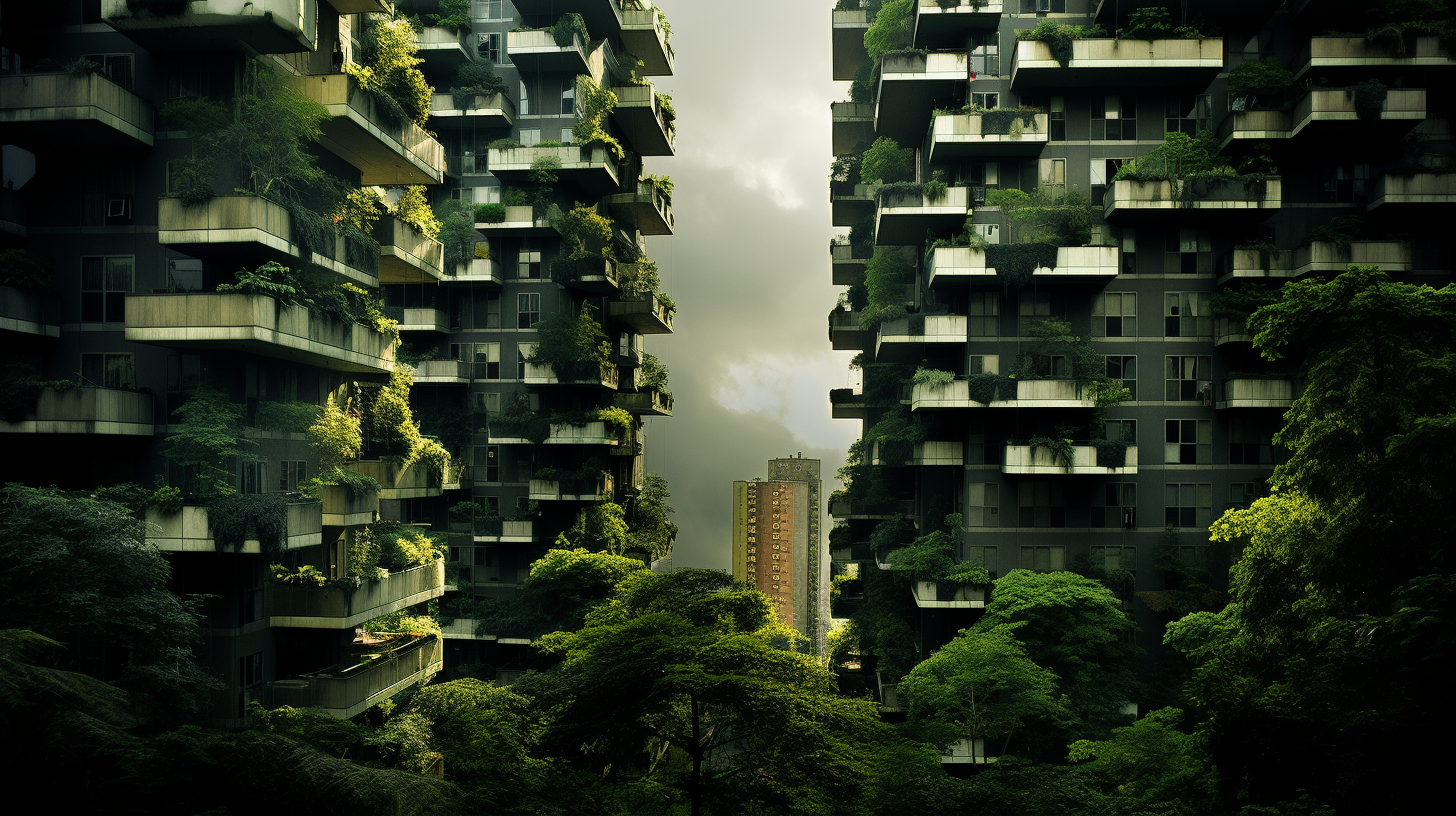As you gaze upon the city skyline, a peculiar embellishment stands out—towering structures adorned with lavish greenery, a stark contrast to their concrete brethren. What once might have been a futuristic fantasy, high-rise gardens are now a vertiginous reality in our seemingly apocalyptic urban sprawl.
Ornate organic tapestries hang from the buildings, serving as visual metaphors for humankind’s late romance with the green world. Inspired by the two past musings, ‘Can Rooftop Gardens Unearth Urban Salvation?’ and ‘Will the Phoenix Fly – Rewilding the Urban Concrete’, our story too, aligns with the narrative of the ‘nature’s unlikely comeback’. But unlike its predecessors, it pivots from conventional horizontal landscapes to the sky-high vertical.
In this eroded epoch, when every inch of land is smothered beneath asphalt or drowned in rising seas, these gardens ascend ever upward. They serve as bastions against the urban heat island effect, which turns our cities into furnaces, contributing to energy reduction as they shield our homes from the relentless sun. They create microclimates that lower temperatures, inviting cool winds to whistle through corridors once defiantly heat-stricken.
The psychological reprieve they provide cannot be understated. Glimpses of green amidst the monochrome monotony of our daily grind are oases of tranquility to the beleaguered urban soul. The gardens atop behemoths are not just pretty—they’re a green lifeline to those starved of natural beauty.
These vertical ecosystems are more than just urban oddities; they’re refuges for displaced wildlife. Birds, insects, and even small mammals have found sanctuary among these lofty labyrinths of leaves and branches. As a gesture of ecological reparation, these gardens are attempts at redemption, signaling a willingness to cohabit with nature rather than dictate its terms.
Yet, the visions of this green grandeur are tempered by the harsh reality of our environmental predicament. While they’re innovative responses to our self-wrought dystopia, they are but bandages on the gaping wounds inflicted upon our planet. High-rise gardens might mitigate pollution, but they are no panacea for the rampant industrialization and consumerism’s ills.
In the brushstrokes of urban green, we see not just isolated acts of architectural defiance but a collective yearning for a lost connection with the Earth. They stand as towering testaments to what could have been had we heeded years of ignored warnings. Yet as a chorus of conservation cries out from the vertebrae of our vertical jungles, one can’t help but wonder if they are merely the echo of nature’s last stand.
The fate of high-rise gardens is as precarious as the ecosystems they imitate—dependent on the continued grace of society’s support and the volatile whim of our climate’s fury. They are dramatic paeans to human ingenuity and resilience, yet they remind us that for all our creativity, we remain at the mercy of nature’s immutable laws.
In these sky gardens, there’s a lesson in humility and a message of urgency. They are not the heralds of a saved world but poignant reminders of what we’re on the brink of losing. As we look to the heavens for our gardens, let’s also find our reflection—teetering on the edge of a green twist in our vertiginous world.
